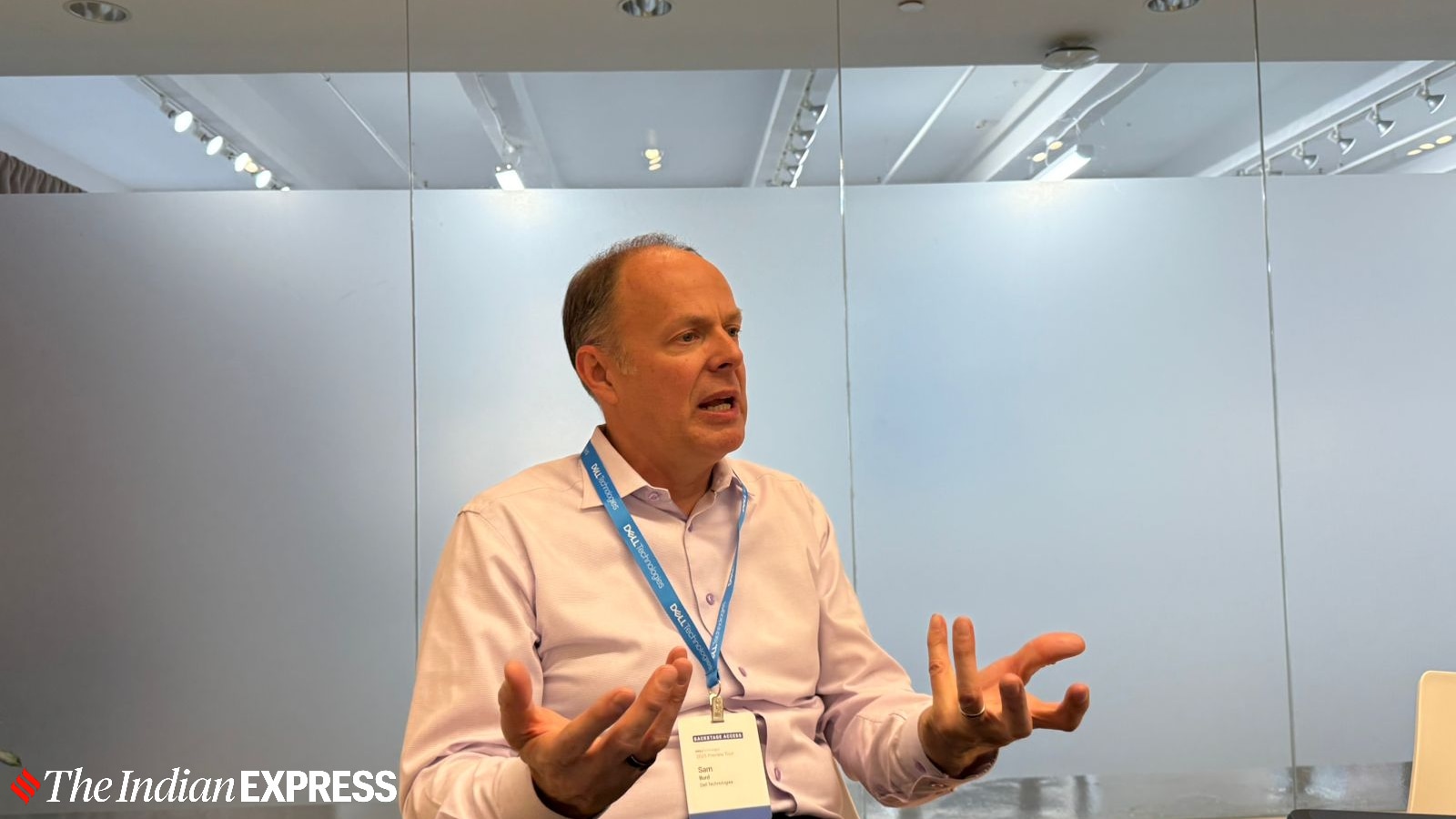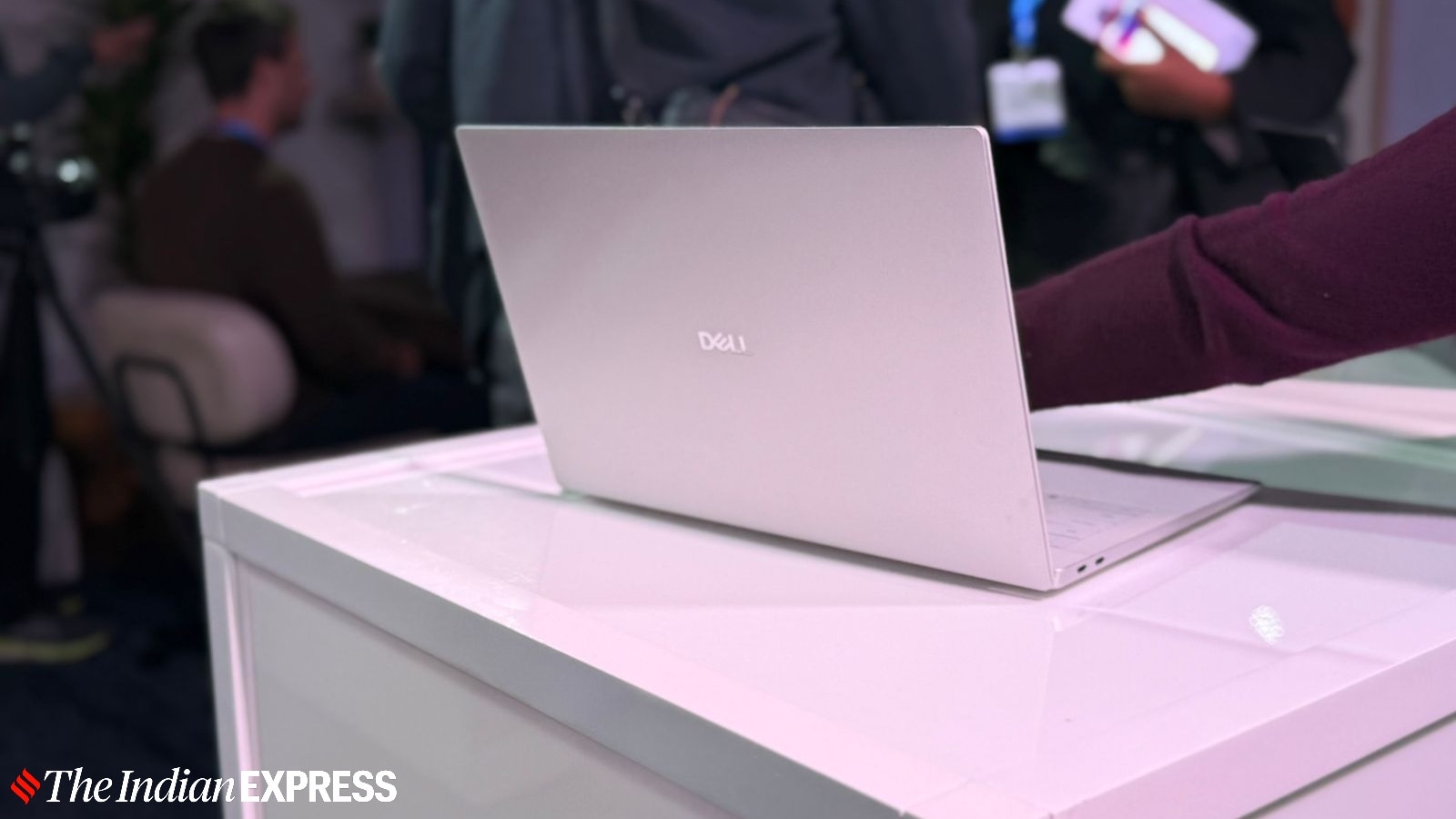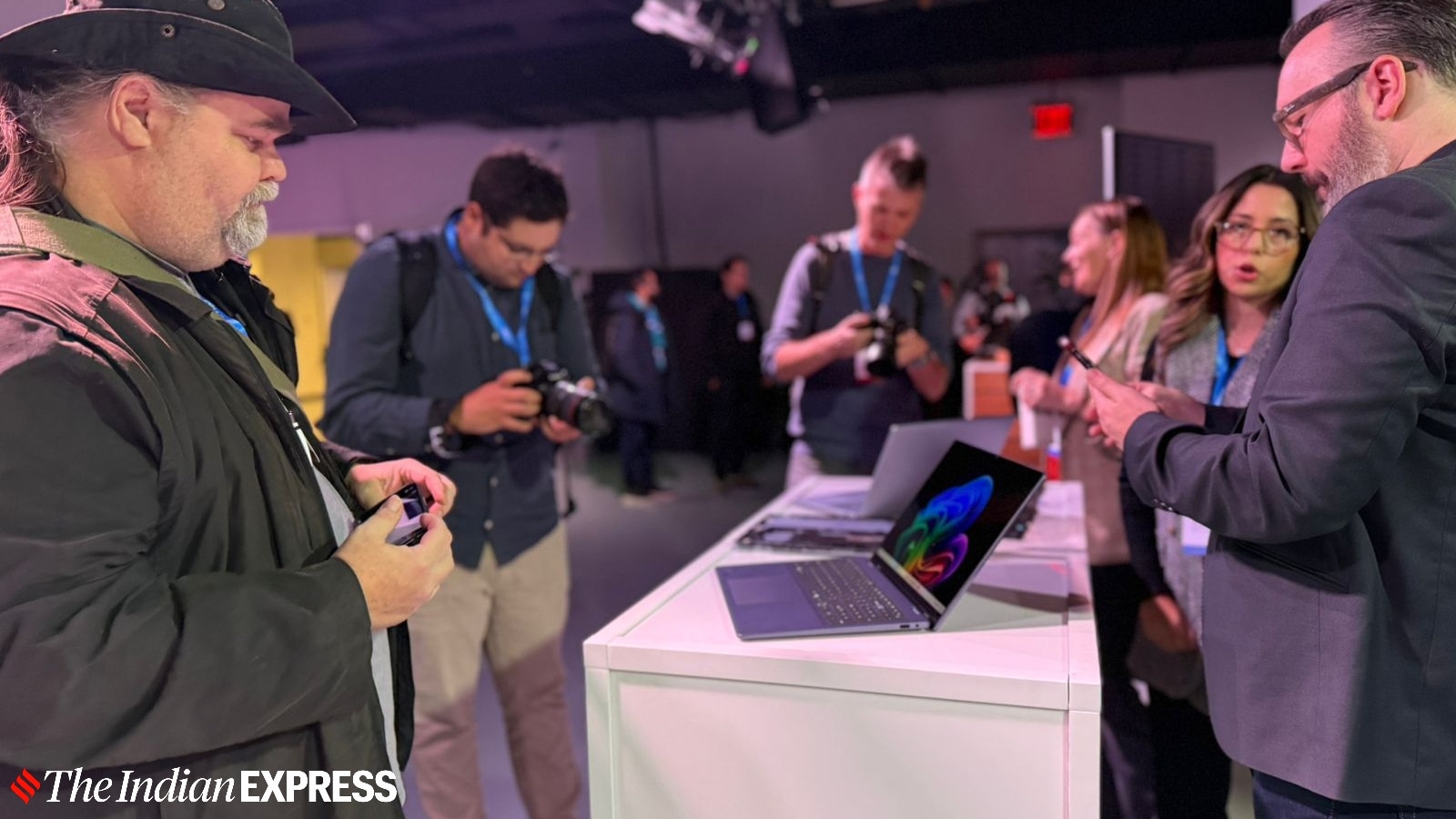At the annual Consumer Electronics Show, which opened in Las Vegas on Tuesday, Dell announced a new lineup of AI-powered PCs. This also led to a rebranding effort aimed at simplifying the brand and making it easier to differentiate between the various SKUs. The AI boom that started two years ago has gained significant momentum, entering apps in 2024 and enabling the next wave of computers and devices. As we enter 2025 and the conversation moves beyond the experimental stage, tech giants are focusing on how they can leverage AI to address specific, high-value challenges facing businesses and consumers.
Indian Express’s Anuj Bhatia spoke with Sam Bird, president of Dell Technologies’ Client Solutions Group, in New York last month to discuss how the AI landscape is changing and how AI PCs are changing. We talked about where we are going next. Edited excerpt:
 Sam Burd, President, Client Solutions Group, Dell Technologies. (Image credit: Anuj Bhatia/Indian Express)
Sam Burd, President, Client Solutions Group, Dell Technologies. (Image credit: Anuj Bhatia/Indian Express)
All major technology companies, including Dell, are investing heavily in artificial intelligence in both hardware and software development. How do you plan to recoup the investments you are currently making in AI?
Burd: The PCs will be AI PCs. Compared to our competitors, we tend to sell at a higher price point than our stacks, and I would say we’ve been very aggressive in bringing AI into mainstream price points. In fact, 80% of our business is commercial and about 20% consumer. We don’t see this as an additional investment in AI, but as an add-on to the PC. We rely on our installed base of PCs to transition to AI-enabled systems. For us, this is an integrated part of the product rather than a separate focus. We’re making it easier for our customers to leverage AI capabilities. Our approach is to provide great products today that will continue to meet your needs one, two, and even three years from now. Whether you’re a business user or a home user investing in a critical device, your product needs to deliver value now and in the future.
 Dell has adopted a new “simplified” naming scheme for its AI PCs. (Image credit: Anuj Bhatia/Indian Express)
Dell has adopted a new “simplified” naming scheme for its AI PCs. (Image credit: Anuj Bhatia/Indian Express)
AI PCs have been around for more than a year, and in the last few months alone we’ve seen a new generation of AI PCs with better chips. You have the hardware in place, but what are your thoughts on developing AI-powered applications? Which apps do you think are most popular among consumers?
Burd: When we talk to customers, we see a lot of talk about how they use Microsoft 365, as AI capabilities are now integrated directly into the operating system. For example, if you’re running Windows 11 with applications from the Office suite, those features are already optimized to run on Neural Processing Units (NPUs). A large portion of the business space relies heavily on these applications, which are designed to take advantage of NPUs to improve performance.
However, there are security applications that some people use at home, and others that are widely used throughout office environments. Many of these are developed to run on NPUs. Creative applications, especially those used by content creators, are another major focus. These advances benefit both home and business users. Applications designed for tasks like video editing and graphic design perform extremely well on NPUs, which is a huge benefit, especially for content creators. Although individuals may benefit, the primary use case is in professional collaborative environments.
AI PCs are still expensive, more expensive than non-AI PCs. Given their high prices, when do you think AI PCs will become more affordable and affordable for the average consumer and the broader market?
Burd: If you look at the workstation business, we’ve been in this business for a long time. AI has been around for about 7-8 years, primarily as part of systems catering to elite power users of technology. However, in the last year we have started to see NPUs (Neural Processing Units) being integrated into PCs. This year, basic AI capabilities will become standard features on devices and we’ll be thinking about collaboration apps built into them. Entry-level systems are expected to have 10, 15, or 20 TOPS (Tera Operations Per Second) NPUs that provide basic AI capabilities. Above that is a tier of “Co-Pilot Plus” devices with more advanced features starting at 40 TOPS and above. This year, we expect these higher-performance systems to primarily occupy the premium tier, while last year’s premium features will move to the mainstream segment. We expect a rapid evolution of today’s premium devices, such as the CoPilot Plus PC, to become mainstream options in the near future. I think that will happen pretty quickly.
 Dell is working more aggressively on AI PCs, collaborating with Intel, AMD, and Qualcomm as chip vendors. (Image credit: Anuj Bhatia/Indian Express)
Dell is working more aggressively on AI PCs, collaborating with Intel, AMD, and Qualcomm as chip vendors. (Image credit: Anuj Bhatia/Indian Express)
Dell works closely with many chip vendors, and with the addition of Qualcomm, our PC lineup is more diverse than ever. As a brand, how do you work with each vendor and manage your product range, especially now with compressed launch schedules and intense competition?
Burd: What our team needs to do is focus on the entire portfolio. We try to stay focused and not just throw everything against the wall to see what happens. For mainstream products, and those with solutions from Intel, AMD, and Qualcomm, our team understands how customers use their devices, whether in stores, online, or in the commercial space, and provides the right products. . For example, AMD has deeply integrated AI accelerators across its portfolio and offers competitive price points. Intel tends to be a little more expensive, but has better run times. Qualcomm’s solutions, on the other hand, are well-suited to enterprise environments, and in many cases, their capabilities are already in use. Similar to Apple’s platform, we believe Qualcomm’s ARM-based chips offer superior runtimes, particularly in cloud-based and other application environments. However, it doesn’t exist much in the discrete graphics space.
Although we do not offer all solutions for all products, we do offer choices across these different product lines. We will guide you to the right solution based on your specific needs. For example, someone on a budget may prefer an AMD processor, while someone whose device is highly mobile and needs to run SAS applications may prefer Qualcomm or Intel. What’s right for one customer may not be right for another. This complexity requires more conversations with customers to understand their requirements, making things even more difficult. But I find it exciting because it brings a lot of innovation to the PC space, and that’s the really exciting part for me.
More smartphone brands are choosing to incorporate home-designed AI features into their interfaces in the hopes that there will be a feature or two that resonates with consumers. However, AI PC comes with a standard Windows experience. Why wouldn’t a brand like Dell ship an AI PC with its own AI layer on top of Windows?
Burd: You may have noticed consistency across the PC space, but we weren’t focused on developing Dell-specific applications. What we’ve done is offer the Copilot and CoPilot Plus applications, and this applies to both Dell and our competitors. We’re not focused on creating a ton of unique brand features. Instead, we believe in the power of PCs with a common operating system. Copilot offers a lot of great features, but for me it’s the more powerful message.
We want our users to experience Koirot’s full potential. And on the commercial side, we understand that some customers may require more unique features. In the consumer space, this is less of an issue. The goal is to make everyday tasks easier, potentially allowing you to draw or summarize documents. In the consumer realm, users can also load other applications that suit their needs.
Our software team focuses on making sure your system runs smoothly. While it’s not possible to create the perfect AI application for drawing, the strength of the PC platform is that users can install everything they need on their devices. Our main priority is to provide a good base experience and help commercial customers deploy and integrate specific models onto their devices. For example, a user may need applications from companies like Meta or Google, and we ensure that they are easily deployed and work seamlessly on the user’s PC.
A few years ago, PC manufacturers were getting into foldable laptops, but suddenly stopped releasing new laptops. What happened to foldable laptops? Is Dell serious about making foldable laptops in the future?
Burd: What’s interesting to me is that the keyboard is still a really great way to interact with your PC. We are exploring many foldable concepts in our lab and working with companies looking for ways to reproducibly fold glass, plastic, and OLED materials. But the keyboard is working well and if you change it to glass people won’t like it as much as a keyboard with a little more travel.
The glass plate is fine for typing, and the foldable display is great. That’s great and makes the system bigger, but it comes at a cost. When you want to use the keyboard to get work done, it can be difficult. So we’ll continue to look at all sorts of options for that form factor. But in the end, the top camera, big screen, keyboard, and big touchpad work really well, and we’re giving it more power.
Discover the benefits of subscription!
Stay informed with access to our award-winning journalism.
Avoid misinformation with reliable, accurate reporting.
Make smarter decisions with key insights.
Choose your subscription package


